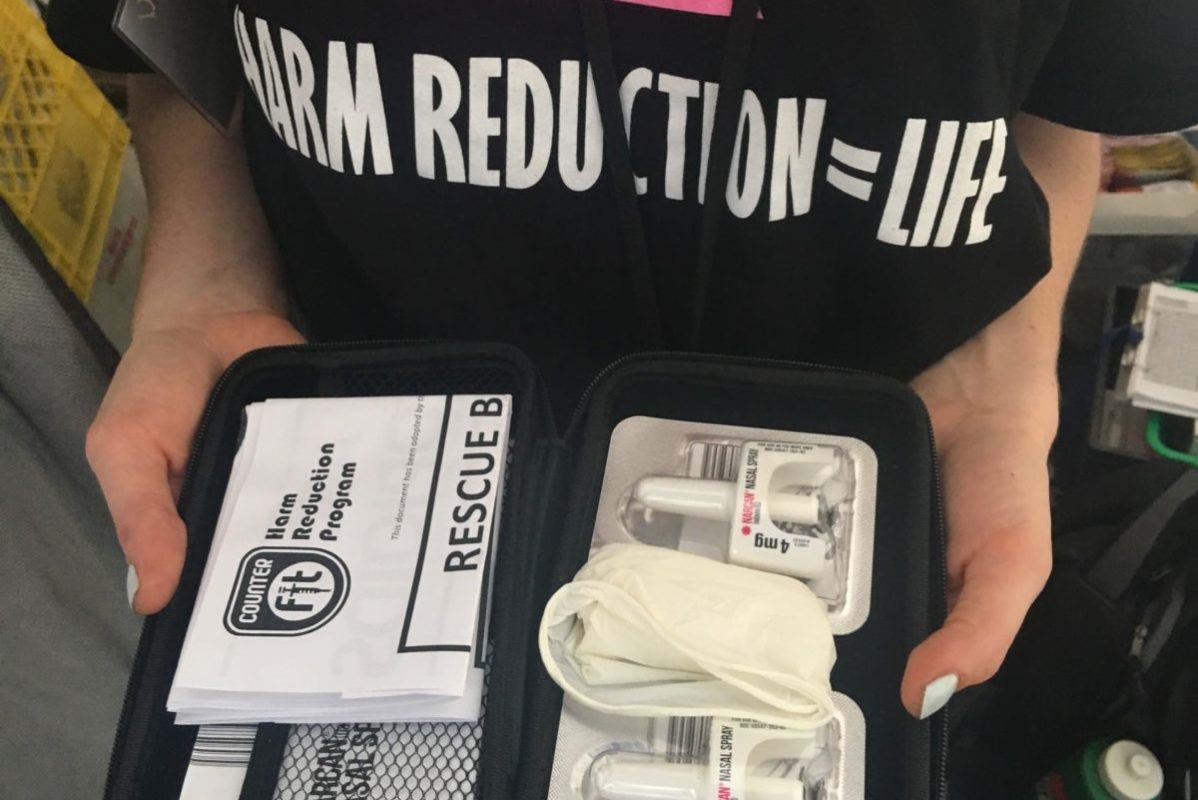During current overdose crisis volunteer says, ‘they couldn’t wait any longer’
On Aug. 12, a team of volunteers opened Toronto’s first overdose prevention site in Moss Park near Queen and Jarvis, north of George Brown College’s (GBC) St. James campus.
Matt Johnson, a volunteer at the pop-up site, said the opening of the unsanctioned site was a quick answer to the increase overdose deaths.
According to the Toronto Overdose Information System’s website, 102 people died due to opioids and 33 from a combination of opioid and alcohol in 2015.
125 people died accidentally from opioid drugs in 2016, with another 54 deaths from opioids and alcohol. This marks the largest annual increase since tracking started in 2013.
“The government has not moved fast enough to respond or isn’t moving to the crisis, and we just felt that, morally and ethically, we couldn’t wait any longer,” said Johnson.
Sarah Ovens, who is on the Toronto Overdose Prevention Site’s co-ordinating committee, said the site at Moss Park has between 30 and 40 people use it each night and volunteers have handed out hundreds of naloxone kits.
“The majority of people that have used the site had an overdose before and also multiple times,” she said.
The site is open every day from 4 p.m. to 10 p.m. People can bring any kind of drugs they want to use. The space has two tents for drug consumption. One tent for injection drugs such as heroin, which can support three people injecting at once, and another for other drugs such as crack, which has capacity for five people.
Around 80 volunteers have worked on the site, including doctors, nurses, social workers and others that have experience with people who use drugs.
“There is a team of three people that specifically work in the injection tents, said Ovens. “All of those people are naloxone trained, first-aid and CPR. They know how to respond an overdose.”
Every day, volunteers walk around the park with sharp containers picking up any drugs and needles they find, trying to keep the area clean. They also talk with people, explain what they are doing and give out water bottles and clean needles.
As a downtown college, GBC is also at risk of having people overdose on campus. As the college buildings are open to the public, drug users could be using in places such as washrooms even if they are not students.
“As a public institution, it is necessary that George Brown have naloxone kits – preferably, nasal spray kits rather than injection ones, as they are easier to use,” said Griffin Epstein, a professor of social work at GBC. “George Brown staff should also be trained in administering naloxone, and, more generally, in recognizing and responding to overdoses.”
A spokesperson for the college said that security at GBC does not have naloxone but the college takes the issue seriously and has been working with Toronto Public Health on developing protocols.
A report of the Toronto and Ottawa Supervised Consumption Assessment Study showed that the necessity to open three supervised injection sites in the city has existed since 2012 but no site was given permission to open until this year.
After the unsanctioned initiative at Moss Park opened the government has taken action.
On Aug. 29, the Ontario government announced that they will invest $222 million over the next three years to combat the overdose crisis.
Nine days after the unsanctioned site was opened at Moss Park, Toronto Public Health also opened their first supervised injection site on the first floor at 277 Victoria Street, close to Dundas and Yonge.
The Dialog reached out to Toronto Public Health and city councillor Joe Cressy, but requests for an interview were not returned by press time.
Ovens said volunteers have no intention of closing the overdose prevention site.
“People tend to have connections, including dealers, close to where they are. It (the new official site) is so far from Moss Park. We don’t think they will walk that far.”
With files from Steve Cornwell


